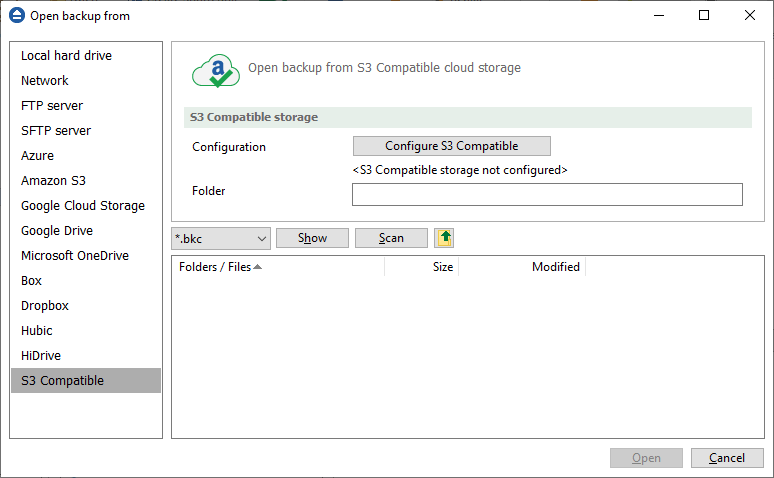There are two ways to open a backup job in Backup4all.
- You can open the backup catalog (.bkc ) or ini file using the Open command from Files menu. You just need to browse your computer and indicate the catalog or ini file location.
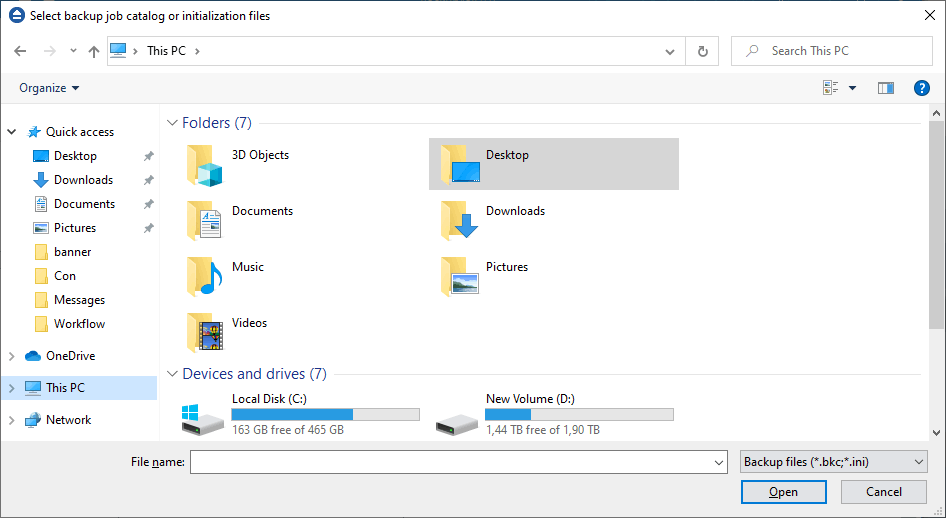
- You can open the backup catalog (.bkc ) or ini file using the Open From command from Files menu. This option is recommended to be used if the catalog is located on a network location or on an FTP/SFTP/Azure/Amazon S3/Google Cloud Storage/Google Drive/OneDrive/Box/Dropbox/Hubic/HiDrive/S3 Compatible, but can also be used for local hard drives.
Open from a local hard drive
Use this page if the catalog is on a local hard drive. Browse your computer and indicate the folder containing the catalog(s) or ini file(s).
Press Show to display the folders and selected file types (.bkc or ini). Press Scan to display a list of only.bkc/ini files from all folders and subfolders in that location.
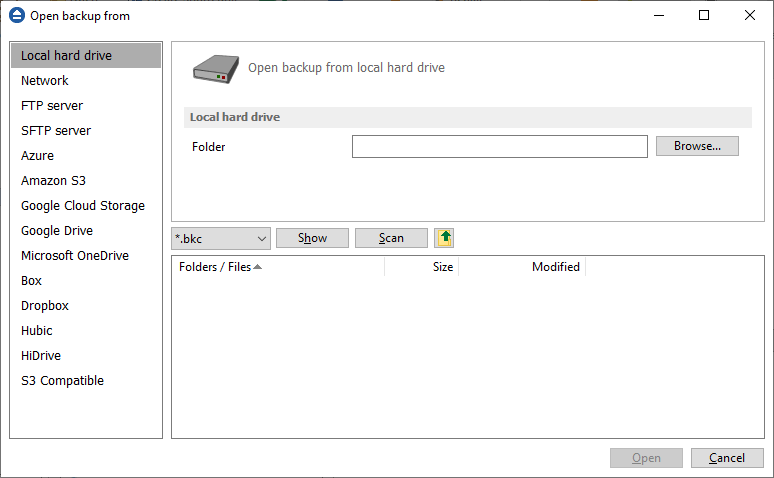
Open from a network drive
Use this page if the catalog is on a network drive. Select the network location and enter the username/password if necessarily.
Press Show to display the folders and selected file types (.bkc or ini). Press Scan to display a list of only.bkc/ini files from all folders and subfolders in that location.
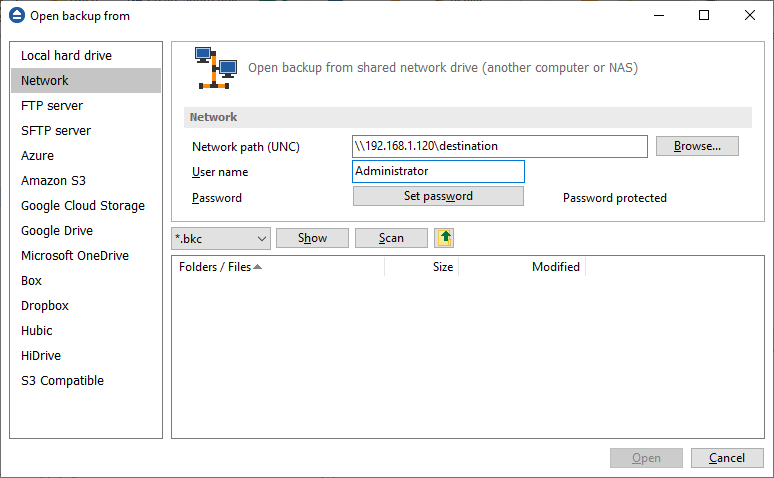
Open backup from an FTP server
Use this page if the catalog is on an FTP server. Configure the FTP server or choose an existing configuration.
Press Show to display the folders and selected file types (.bkc or ini). Press Scan to display a list of only.bkc/ini files from all folders and subfolders in that location. Here you can see how to configure the FTP server.
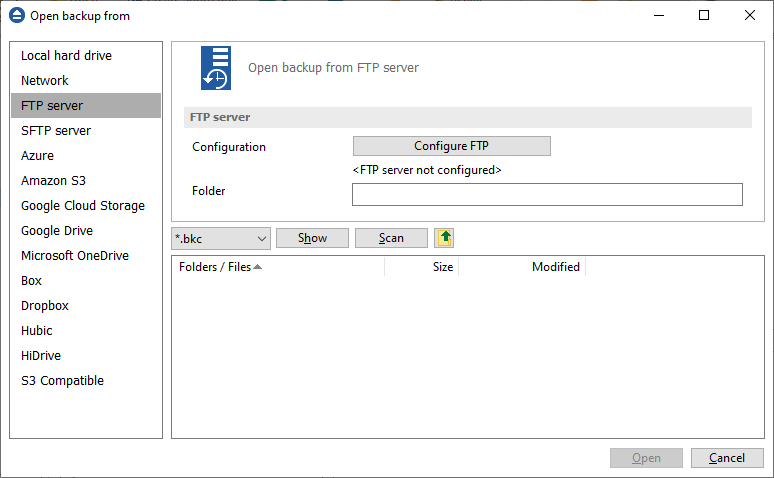
Open backup from an SFTP server
Use this page if the catalog is on an SFTP server. Configure the SFTP server or choose an existing configuration.
Press Show to display the folders and selected file types (.bkc or ini). Press Scan to display a list of only.bkc/ini files from all folders and subfolders in that location. Here you can see how to configure the SFTP server.
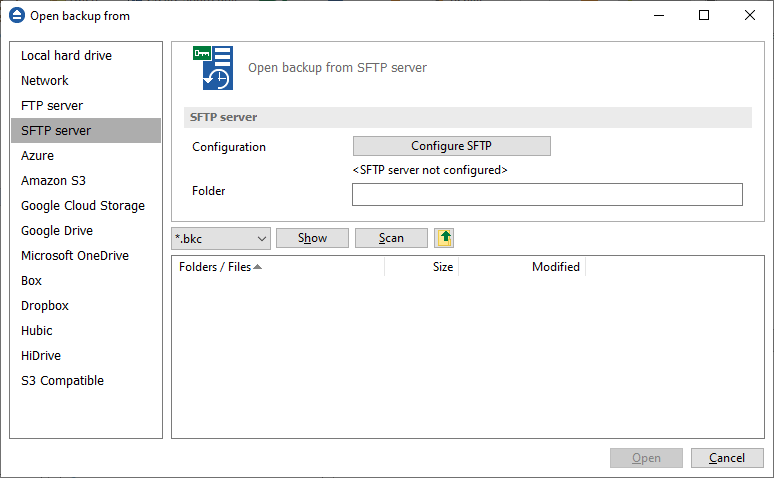
Open backup from Azure
Use this page if the catalog is located on Azure server. Configure Azure or choose an existing configuration.
Press Show to display the folders and selected file types (.bkc or ini). Press Scan to display a list of only.bkc/ini files from all folders and subfolders in that location. Here you can see how to configure Azure.
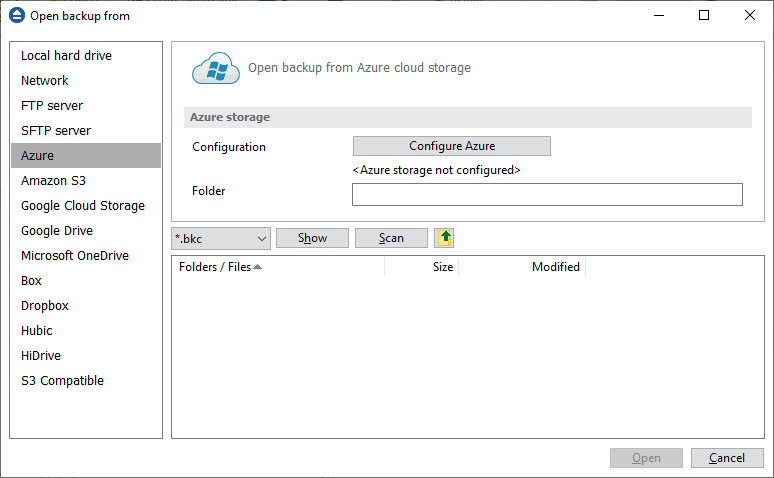
Open backup from Amazon S3
Use this page if the catalog is located on Amazon S3. Configure the Amazon S3 storage or choose an existing configuration.
Press Show to display the folders and selected file types (.bkc or ini). Press Scan to display a list of only.bkc/ini files from all folders and subfolders in that location. Here you can see how to configure the Amazon S3.
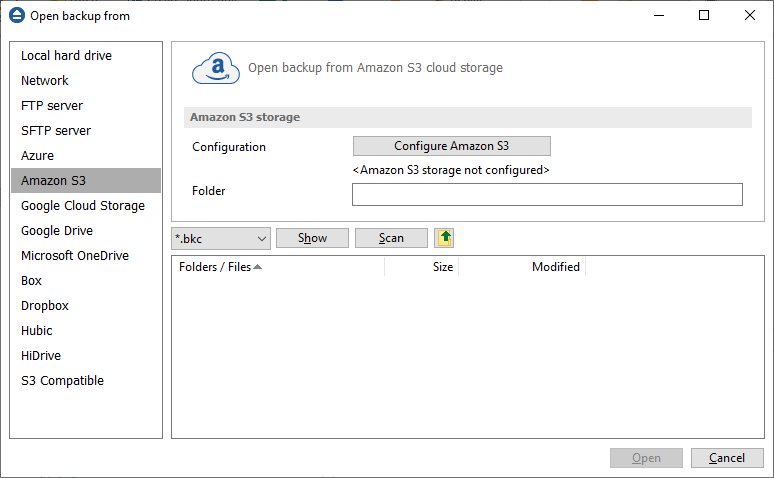
Open backup from Google Cloud Storage
Use this page if the catalog is located on Google Cloud Storage. Configure the Google Cloud Storage or choose an existing configuration.
Press Show to display the folders and selected file types (.bkc or ini). Press Scan to display a list of only.bkc/ini files from all folders and subfolders in that location. Here you can see how to configure the Google Cloud Storage.
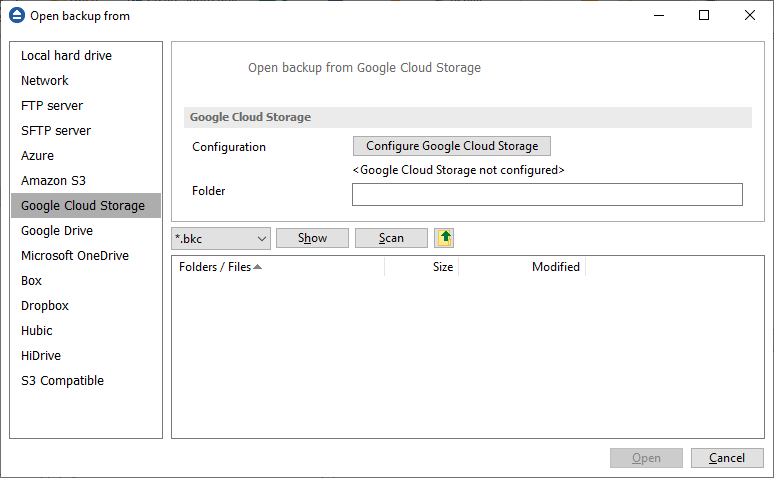
Open backup from Google Drive
Use this page if the catalog is located on Google Drive. Configure Google Drive or choose an existing configuration.
Press Show to display the folders and selected file types (.bkc or ini). Press Scan to display a list of only.bkc/ini files from all folders and subfolders in that location. Here you can see how to configure Google Drive.
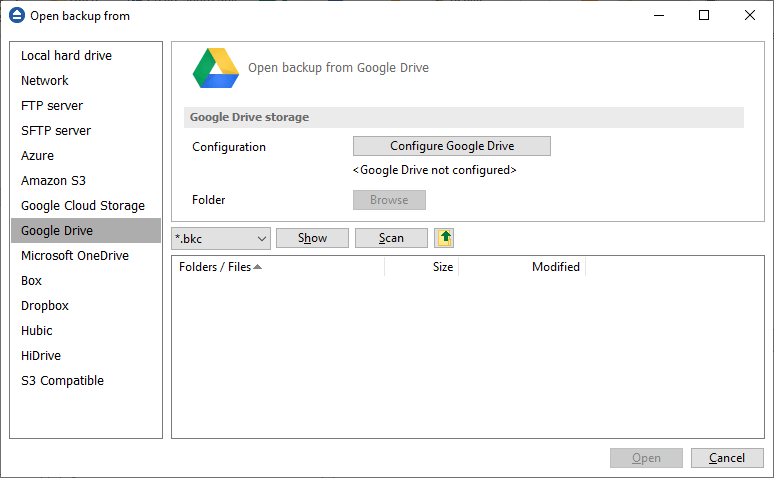
Open backup from OneDrive
Use this page if the catalog is located on OneDrive. Configure OneDrive or choose an existing configuration.
Press Show to display the folders and selected file types (.bkc or ini). Press Scan to display a list of only.bkc/ini files from all folders and subfolders in that location. Here you can see how to configure OneDrive.
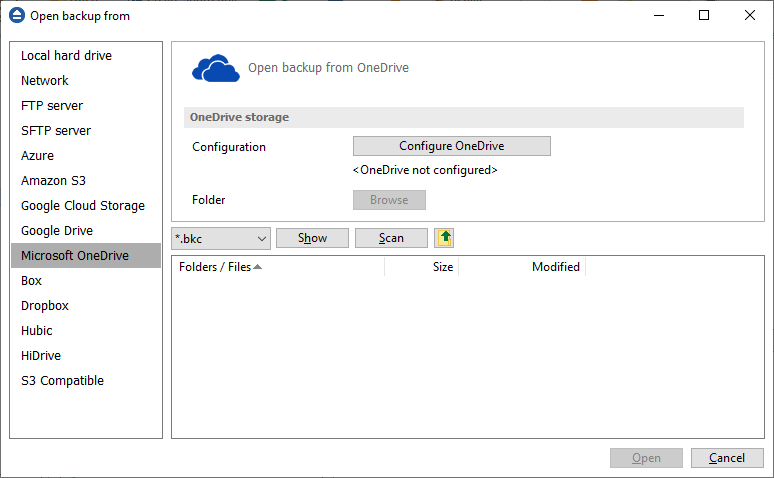
Open backup from Box
Use this page if the catalog is located on Box. Configure Box or choose an existing configuration.
Press Show to display the folders and selected file types (.bkc or ini). Press Scan to display a list of only.bkc/ini files from all folders and subfolders in that location. Here you can see how to configure Box.
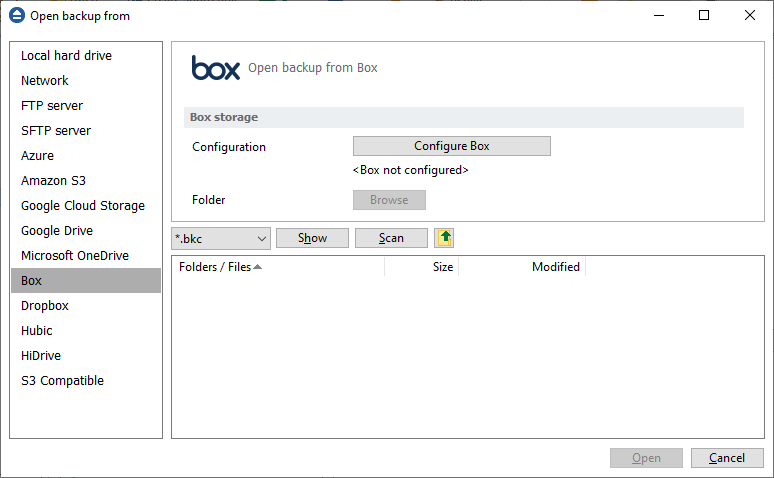
Open backup from Dropbox
Use this page if the catalog is located on Dropbox. Configure Dropbox or choose an existing configuration.
Press Show to display the folders and selected file types (.bkc or ini). Press Scan to display a list of only.bkc/ini files from all folders and subfolders in that location. Here you can see how to configure Dropbox.
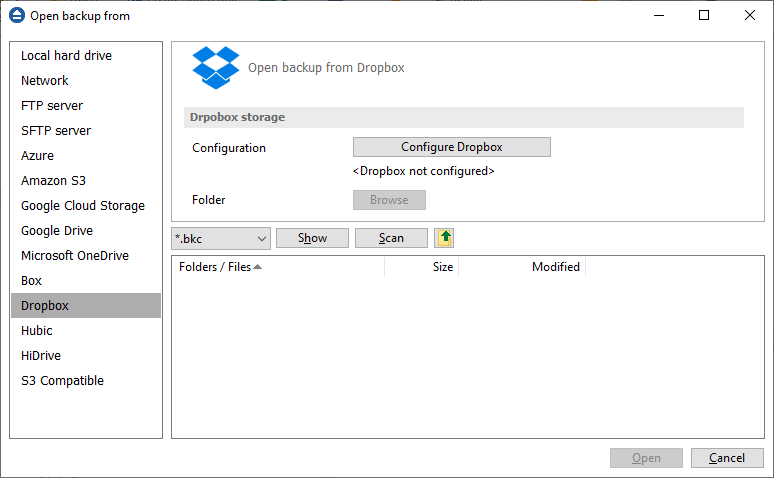
Open backup from Hubic
Use this page if the catalog is located on Hubic. Configure Hubic or choose an existing configuration.
Press Show to display the folders and selected file types (.bkc or ini). Press Scan to display a list of only.bkc/ini files from all folders and subfolders in that location. Here you can see how to configure Hubic.
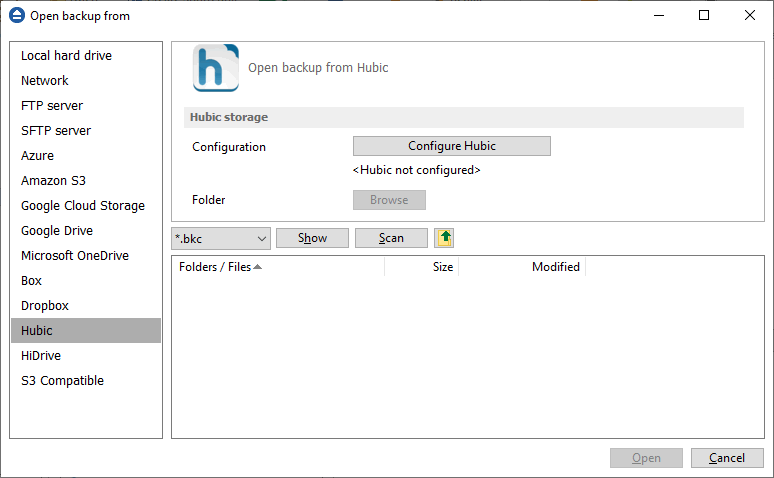
Open backup from HiDrive
Use this page if the catalog is located on HiDrive. Configure HiDrive or choose an existing configuration.
Press Show to display the folders and selected file types (.bkc or ini). Press Scan to display a list of only.bkc/ini files from all folders and subfolders in that location. Here you can see how to configure HiDrive.
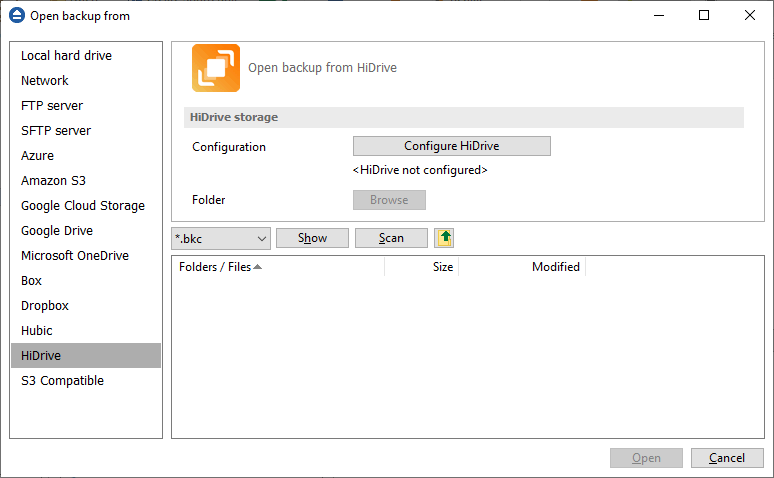
Open backup from S3 Compatible
Use this page if the catalog is located on S3 Compatible. Configure S3 Compatible Storage or choose an existing configuration.
Press Show to display the folders and selected file types (.bkc or ini). Press Scan to display a list of only.bkc/ini files from all folders and subfolders in that location. Here you can see how to configure S3 Compatible Storage.
